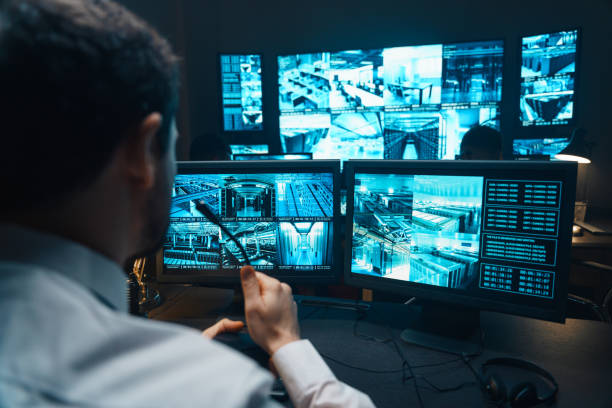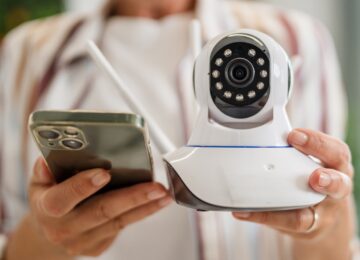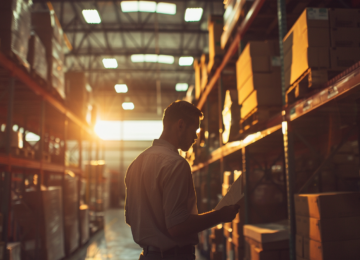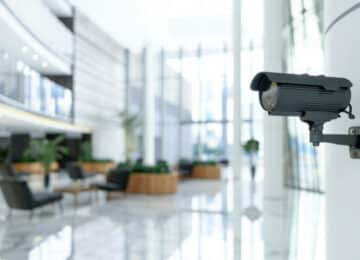What is real-time video analysis?

When it comes to video surveillance, there's a before and an after. In the past, companies were equipped with security cameras viewed by dedicated staff. Today, those who want to go further in preventing the risk of theft are opting for Artificial Intelligence coupled with video surveillance. Two technologies that combine to provide real-time video analysis.
The principles of real-time video analysis
Video analysis relies on real-time image analysis tools to obtain certain information or detect abnormal situations. In a retail environment, for example, video analysis can be used to observe the customer journey. It can also help to spot suspicious gestures, thereby limiting the risk of theft. The use of these images is regulated: they can only be consulted by the company manager and/or the Data Protection Officer, and video surveillance images are sensitive data. For this reason, the retention period for video surveillance images is limited to a maximum of 30 days in order to prevent any misuse.
Deplearning at the dawn of AI
Real-time video analysis was born of deplearning, also known as "deep learning". This sub-field of Artificial Intelligence has revolutionised the field of video analysis. By observing how deep neural networks work, scientists have ensured that video analysis systems are capable of reproducing human behaviour. To achieve this, artificial neurons had to be created. Once created, the programme was fed with images. Do we want it to be able to recognise a car? Thousands of images of cars are then presented to the neurons. This training will then enable the machine to recognise a car among other objects.
Deeplearning works in layers: this is the learning process. First-level neurons calculate lines and angles. These calculations serve as the basis for a second level, then a third, and so on. All until a relevant result is obtained. Around twenty layers can thus be obtained to enable the artificial neural network to refine its understanding of the image. The combination of deeplearning and video surveillance has marked a decisive turning point in the development of advanced Artificial Intelligence solutions.
What is real-time video analysis?
Video analysis is the result of traditional video surveillance coupled with Artificial Intelligence (AI). This is software installed on the existing video system, which automatically describes what is captured by the surveillance cameras. Thanks to a complex system of algorithms and its artificial neural network, real-time video analysis is able to spot an object out of place, suspicious gestures, etc.
Conventional video surveillance allows problems to be detected once they have occurred. AI video surveillance, on the other hand, is capable of detecting and alerting in real time thanks to video analysis. A solution that offers greater responsiveness, and therefore greater efficiency.
The benefits of real-time video analysis
A tool for preventing business losses
When it comes to security, retailers are increasingly turning to intelligent video surveillance, particularly to combat shrinkage. Thanks to real-time video analysis, shop managers can spot suspicious gestures:
- hiding items ;
- handling certain products, such as cosmetics
- changing labels.
- In all these cases, the analysis of gestures carried out by intelligent video surveillance makes it possible to limit the risk of theft.
Valuable data to improve the customer experience
Video analysis helps to prevent theft, but that's not its only advantage. Intelligent video surveillance does more than simply observe: it is a genuine counting and behavioural detection tool capable of anticipating specific customer movements. By generating thousands of pieces of data and using the heat map principle, it makes it possible to better analyse customer movements inside a store:
- How many people have visited the shop in a given time?
- When is it busiest?
- What are customers' buying habits?
- Which departments do they go to the most and where do they spend the most time?
- These are all data that can be used to refine the sales strategy by improving the in-store experience, thereby multiplying the chances of attracting future customers.
Video analysis at the service of the company
Intelligent video surveillance can also be used to optimise in-store operations. Thanks to video analysis, retailers can :
- check stock levels in real time by tracing the flow of products on the shelves;
- optimise sales areas;
- define the number of employees needed at different times of the week.
The fruit of years of research, intelligent video surveillance and deeplearning are cutting-edge technological solutions that are easy to install, as they are based on existing video surveillance cameras. Would you like to equip your business? Contact us now to discuss your needs and expectations.
The most popular
Related news
Discover what Veesion can do for you. Do you have one or more stores?
Our team will contact you within 48 hours





